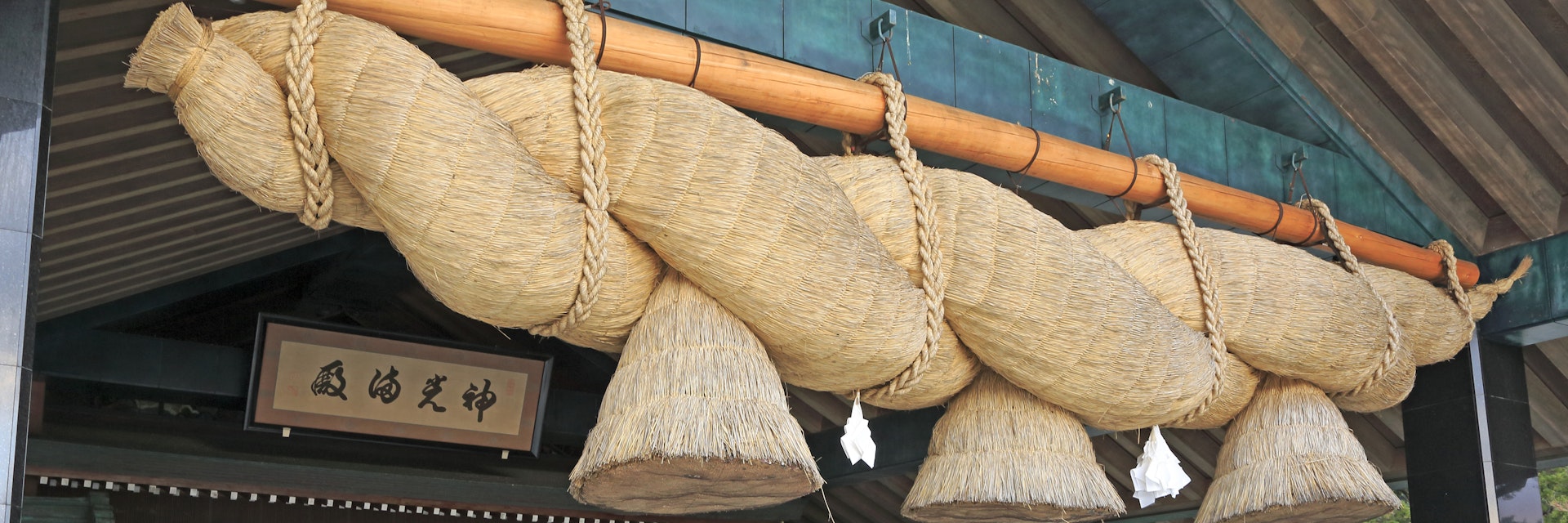Izumo Taisha, also known as Izumo ŇĆyashiro, is perhaps the oldest ShintŇć shrine in Japan. This shrine, dedicated to ŇĆkuninushi, god of marriage and bringer of good fortune, is as old as Japanese recorded history ‚Äď there are references to Izumo in the Kojiki, Japan's oldest book ‚Äď and its origins stretch back into the age of the gods. It's second in importance only to Ise-jingŇę (in Kansai), the home of the sun goddess Amaterasu, and makes a charming day trip from Matsue.
Visitors to the shrine summon ŇĆkuninushi by clapping four times rather than the usual two. According to tradition, the deity ceded control over Izumo to the sun goddess's line ‚Äď on the condition that a huge temple would be built in his honour, one that would reach as high as the heavens.
Impressive as the structure is today, it was once even bigger. Records dating from AD 970 describe the shrine as the tallest building in the country; there is evidence that the shrine towered as high as 48m above the ground during the Heian period (794‚Äď1185). It may well have been too high for its own good ‚Äď the structure collapsed five times between 1061 and 1225, and the roofs today are a more modest 24m high.
The current appearance of the main shrine dates from 1744. The main hall underwent one of its periodic rebuildings in 2013, to be repeated in another 60 years.
Huge shimenawa (twisted-straw ropes) hang over the entry to the main buildings. Those who can toss and lodge a coin in them are said to be blessed with good fortune. Visitors are not allowed inside the main shrine precinct, most of which is hidden behind huge wooden fences. Ranged along the sides of the compound are the ¬ŠŇęįž≥‹-≤ű≥ů≤Ļ, which are long shelters where Japan's myriad deities stay when they come for their annual conference.
When former princess Noriko married the eldest son of the head priest of Izumo Taisha ‚Äď a 'commoner' ‚Äď she relinquished her royal status and now lives in a house near the shrine.

